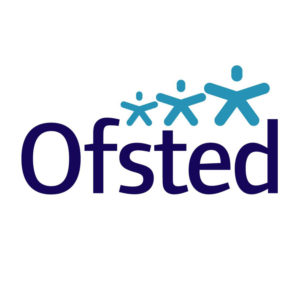Chapter contents
Safeguarding Disabled Children
What is a Disability?
A disability is a long-term condition that affects daily activities. This means that a child with a disability often needs help to take part in activities, look after themselves and thrive. They might have:
- Difficulty with sight or hearing
- Difficulty communicating and understanding
- Mental health problems
- Mobility problems.
Some children’s disabilities are noticed at birth, while others are identified over time. This might be, for example, when the child doesn’t meet their developmental milestones at the expected time. Some disabilities might be the result of an accident or serious illness.
The rights of disabled children are protected in England by the Equality Act 2010.
Training opportunity: Disability Awareness
Caring For a Disabled Child
Disabled children come into care for different reasons. Sometimes the foster placement is to provide regular respite for the parents, while other children might be placed permanently because their parents are unable to look after them. Not all disabled children who are placed in foster care have experienced neglect or abuse.
Disabled people often find that their disabilities are the first, and sometimes only thing that people notice about them. We want our foster parents to see the child before their disability. You will help the child to achieve their potential, while recognising the special needs they have.
Disabled children might need you to help them:
- Move around
- Get dressed and go to the toilet
- Understand situations and interact with other people
- Communicate with others
- Stay safe from harm
In addition, the child might need to take medication, or receive other medical treatment. The child’s medical needs will be explained in their health plan, placement plan and risk assessment and you might receive training to look after their medical needs. If this is necessary, it will be arranged by the child’s social worker and the Looked-After Children’s Nurse (LAC Nurse).
The child might also need special equipment such as a hoist, wheelchair or car seat. This will be provided for you at the time of placement. Any equipment that becomes necessary during placement will be discussed at the time. Financial assistance might be available to help with cost (see financial support).
There is a wide-range of information about caring for children with autism on the ISP corporate website.
Our therapist, Marnie Clayton-Slater also talks about caring for children with autism. Her videos are available on YouTube:
Safeguarding Disabled Children
All children have the right to be safe from abuse and neglect and to be protected from harm. However, disabled children have been found to be more vulnerable to mistreatment and harm because they:
- Are more likely to experience social isolation and have fewer outside contacts than non-disabled children.
- Are dependent on parents and carers for practical assistance in daily living, including intimate personal care. This therefore increases their risk of exposure to abusive behaviour.
- Have impaired capacity to resist or avoid abuse.
- May have speech, language, and communication needs which may make it difficult for them to tell others what is happening.
- Often do not have access to someone they can trust to disclose that they have been abused.
Research has shown that professionals involved in their care may be reluctant to act on concerns for such reasons as:
- Over identifying with the child’s parents or carers and being reluctant to accept that abuse or neglect is taking place. Abuse can be wrongly attributed to the stress and difficulties of caring for a disabled child.
- A lack of knowledge about the impact of disability on the child.
- A lack of knowledge about the child e.g. not knowing the child’s usual behaviour.
- Not being able to understand the child’s method of communication.
- Confusing behaviours that may indicate the child is being abused with those associated with the child’s disability. For example, sexually harmful behaviour and self-harming.
- Denial of the child’s sexuality.
If you have any concerns that a child may have experienced abuse, you should contact your supervising social worker straight away. Read the Government’s guidance on safeguarding disabled children
Financial Support
Applying for benefits
Some children and their carers may be able to receive state benefits in recognition of additional living costs. These benefits include Disability Living Allowance (DLA), Personal Independence Payment (PIP) and Carer’s Allowance. You can find out about carer benefits at the Carers UK website. If a child is eligible for benefits as a result of a disability, we will encourage you to apply for those benefits. Your supervising social worker can provide advice and help about how to do this.
DLA & PIP payments
Children with disabilities have additional care and mobility needs, and this can mean additional financial cost for parents and carers. Parents and Carers can apply for Disability Living Allowance (DLA) to help pay for these extras. The amount of the benefit depends on the individual child’s care and mobility needs; you can see the current rates at the Carers UK website. If a child you are looking after receives DLA payments, you might also be eligible for carer’s allowance, but this will depend on your household income.
The child’s DLA payments are regularly reviewed but can continue until they are 16. Just after their 16th birthday, the young person will receive a letter inviting them to apply for Personal Independence Payments (PIP) instead. This money will be paid directly to the young person, if they are eligible. They will not automatically qualify just because they were eligible for DLA and they might have to attend a face-to-face assessment interview. You can find out more about PIP payments and how to apply at the Carers UK website.
Who is accountable for the Disability Living Allowance?
Parents and carers who receive DLA payments on behalf of a child are legally accountable for how they spend the allowance. You should therefore keep a record of how you use the allowance, and share this with your supervising social worker and the child’s social worker. You will need to show that you are using the allowance to meet the child’s additional needs. Some examples of appropriate use of DLA include:
- Physical activities, e.g. swimming, horse riding
- Sensory equipment, e.g. special lighting
- Costs of replacing soiled bedding, mattresses, clothing
- Transportation costs
Read our guidance document about the management of DLA payments:



